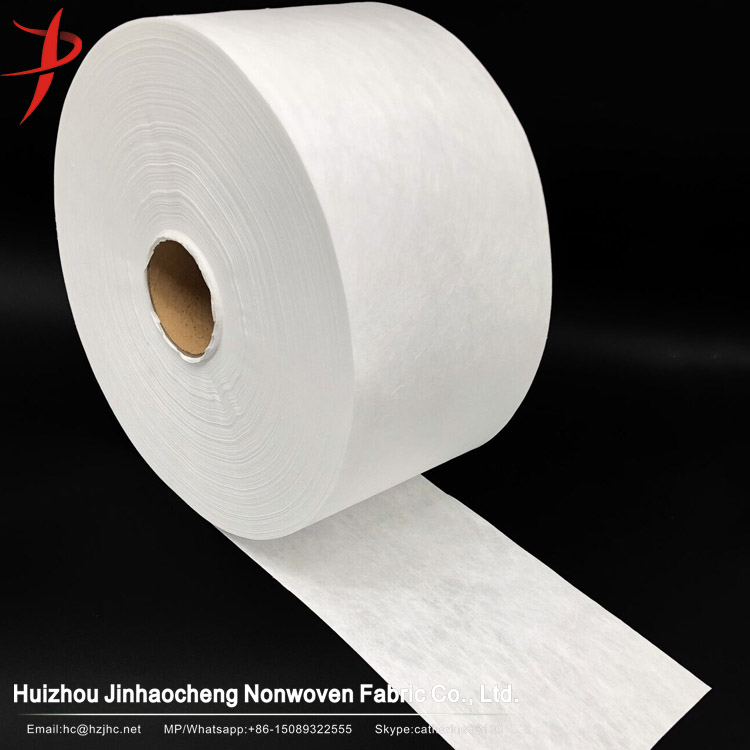Menene dalilan kimiyyar abin duniya bayan amfani da nau'ikan iri daban-dabanabin rufe fuska?Ƙara gaba zuwa kayan kariya na sirri (PPE), menene kayan aikin polymer na musamman da tsarin masana'antu suka haɗa?
Wane abu aka yi masks?
Me yasa akwai babban bambanci tsakanin abin rufe fuska daban-daban? Lokacin da nake rubutu, na buɗe abin rufe fuska mai kunna gawayi mai layi huɗu wanda aka saba amfani da shi a cikin dakin gwaje-gwaje don gano yadda yake a ciki:
Kamar yadda muke iya gani, an raba abin rufe fuska zuwa nau'i hudu. Na waje biyu yadudduka ne guda biyu-kamar kayan, baƙar fata yana kunna carbon, ɗayan kuma mai yawa ne, wanda kadan ne kamar napkin. Small make up bayan duba wasu bayanai don fahimta, ban da tsakiyar tsakiyar. An kunna carbon Layer, sauran yadudduka uku sune irin kayan da ake kira masana'anta marasa kaya (Sunan Ingilishi) ko kuma mayafin da ba a saka ba) Fabric wanda ba a saka ba, wanda aka yi shi da zaren kai tsaye ko bazuwar zaruruwa. Ana kiransa zane saboda bayyanarsa da wasu kaddarorin.
Akwai nau'o'in masana'antu iri-iri don masana'anta da ba a saka ba, gami da tsarin spunbonded, tsarin narkewar narkewa, tsarin jujjuyawar zafi, tsarin spuning da sauransu. The raw fibers da za a iya amfani da su ne yafi polypropylene (PP) da polyester (PET). Bugu da kari, akwai nailan (PA), viscose fiber, acrylic fiber, polypropylene fiber (HDPE), PVC, da dai sauransu.
A halin yanzu, yawancin yadudduka marasa saƙa ana yin su ta hanyar spunbonded a kasuwa. Wannan hanya tana samar da filament mai ci gaba ta hanyar fiddawa da kuma shimfiɗa polymer, sannan za a sanya filament ɗin a cikin gidan yanar gizo, sannan kuma za a haɗa fiber net da kanta, haɗin ginin thermal, haɗin sinadarai ko ƙarfafa injina, ta yadda fiber net ɗin ya zama mara saƙa. Yadudduka da ba a saka ba suna da sauƙin ganewa. Gabaɗaya, wurin jujjuyawa na yadudduka waɗanda ba saƙa ba suna da siffar lu'u-lu'u.
Wani tsari na masana'anta na yau da kullun wanda ba a saka ba ana kiransa buƙatun masana'anta mara saƙa. Ka'idar masana'anta ita ce ta sake huda net ɗin fiber tare da gefuna da gefuna da gefuna na sashin triangle (ko wasu sassan).Lokacin da barb ɗin ya wuce ta hanyar hanyar sadarwa, yana tilasta saman ƙasa da Layer na gida na cibiyar sadarwa a cikin hanyar sadarwa. zuwa gogayya tsakanin zaruruwa, asalin cibiyar sadarwa mai laushi yana matsawa. Yayin da allurar ta fita daga gidan yanar gizon, barbs suna barin igiyoyin a baya, ta yadda yawancin igiyoyin suka zama. Bayan sau da yawa na buƙatar buƙata, yawancin fiber daure suna huda cikin gidan yanar gizon fiber, kuma zaruruwan da ke cikin gidan suna manne da juna, don haka suna samar da kayan da ba a saka ba. tare da wani ƙarfi da kauri.
Amma ramukan yadudduka guda biyu marasa saƙa sun yi girma da yawa don dalilai na likita don ware ƙwayoyin cuta a kusan 100nm.
Saboda haka, matsakaicin Layer na mashin tiyata na gabaɗaya an yi shi da zanen da ba a saka ba ta hanyar narkewa ta hanyar narkewa. extruder a zazzabi na game da 240 ℃ (ga PP) .The narkewa wuce ta cikin metering famfo da kuma kai allura mold shugaban.Lokacin da sabuwar kafa polymer ne. extruded daga spinneret, karshen matsawa iska ACTS a kan polymer da kuma zana zafi filament zuwa 1 ~ 10 m diamita a wani iska gudun sama fiye da sauti (550m/s). Dangane da kaddarorinsa na zahiri, irin wannan gidan yanar gizon ana kiransa microfiber net.Wadannan ultrafine fibers tare da capillarity na musamman suna ƙara lamba da farfajiyar filaye a kowane yanki na yanki, don haka sanya yadudduka da aka fesa narke suna da kyau tacewa, garkuwa, rufi da ɗaukar mai. Properties.It za a iya amfani da a cikin iska, ruwa tace abu, kadaici abu, mask kayan da sauran filayen.
Tsarin tacewa na abin rufe fuska na likitanci shine yaduwa na Brownian, interception, karo inertial, daidaitawar nauyi da adsorption na electrostatic.Hudu na farko duk abubuwan jiki ne, waɗanda sune halayen dabi'a na yadudduka waɗanda ba saƙa da aka samar ta hanyar narkewa. Kayan tacewa shine kusan 35%.Wannan bai dace da buƙatun abin rufe fuska na likita ba. Muna buƙatar gudanar da jiyya a tsaye akan kayan, sanya fiber ɗin ya ɗauki cajin lantarki, da amfani da electrostatic don ɗaukar iska mai iska wanda littafin coronavirus ke ciki.
Novel Coronavirus aerosol (aerosol) aka kama da novel coronavirus adsorption ta hanyar coulomb karfi na cajin fiber.Ka'ida ita ce sanya kayan tacewa ya fi buɗewa, barbashi na iya kama ƙarfin yana da ƙarfi, kuma ƙimar cajin yana ƙaruwa, tallan barbashi da ƙari. Tasirin polarization ya fi ƙarfi, don haka tace Layer na narke-busa ba saƙa tace kayan, dole su wuce don magance, ba zai iya canzawa a ƙarƙashin yanayin numfashi. juriya, cimma 95% tacewa, don zama tasiri a kan cutar.
Bayan wasu bincike, Ina da cikakkiyar fahimta game da abun da ke tattare da abin rufe fuska a hannuna: Layer na waje an yi shi da rigar allura wanda ba a saka ba wanda aka yi da PP, kuma interlayer wani Layer na carbon da aka kunna da kuma PP narke zanen fesa. Layer.
Lokacin aikawa: Agusta-29-2020

